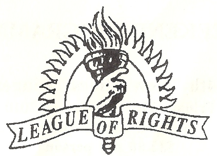President Trump to Finally Take on George Soros! By Charles Taylor (Florida)
Trump on Truth Social had this to say: "George Soros, and his wonderful Radical Left son, should be charged with RICO because of their support of Violent Protests, and much more, all throughout the United States of America," Trump wrote.
"Soros, and his group of psychopaths, have caused great damage to our Country! That includes his Crazy, West Coast friends. Be careful, we're watching you! Thank you for your attention to this matter!"
The legal and political controversies surrounding George Soros and his son Alex Soros have intensified in recent years. Critics argue that Soros, through the Open Society Foundations (OSF) and affiliated political action committees, has created and funded a sprawling network of organisations that have facilitated mass protests and, at times, violent unrest. President Donald Trump has gone further, calling for Soros to face charges under the Racketeer Influenced and Corrupt Organizations Act (RICO).
Here I examine both sides of the debate: the case against Soros, as a prosecutor might frame it, and the defences typically raised in his favour. Ultimately, however, the weight of the evidence points toward liability.
The Case Against SorosRICO Enterprise
OSF and its network of affiliates constitute an "enterprise" under RICO. Far from being a loose collection of charities, the foundation is a coordinated financial apparatus, channelling billions toward advocacy and political campaigns. With Soros and his son exercising central control, this meets the enterprise threshold.
Pattern of Racketeering Activity
Prosecutors could argue that Soros-funded entities have engaged in:
Material support for rioting, where grants enable interstate travel and organisation for demonstrations that predictably devolve into violence.
Mail and wire fraud, when groups solicit funds under the guise of peaceful activism, while acting as a pipeline for unlawful protest activity.
Obstruction of justice, through systematic funding of district attorney races where elected officials then decline to prosecute rioters or violent offenders.
While no single smoking gun may exist, the cumulative record of funding groups tied repeatedly to violent unrest demonstrates a pattern that fits the statutory requirement.
Active Participation
Both George and Alex Soros are not passive philanthropists. They direct strategies, approve grant making, and publicly describe desired policy outcomes. This satisfies the "operation or management" requirement of RICO participation.
Intent and Foreseeability
After decades of experience, Soros knew, or at the very least was wilfully blind, that his grants to activist groups would facilitate not only peaceful protest but violent unrest. The repeated cycle of funding followed by riots establishes foreseeability, a key element for liability.
Soros's liability does not stop at RICO. Joint and several liability principles allow prosecutors to link his funding to the harms caused by radicals.
Concerted Action
OSF funds groups with a common purpose, disruptive protest against American institutions.
Causation
Without OSF grants, many of these organisations would lack the capacity to mobilise at scale, making Soros's role a proximate cause.
Foreseeability
After the 2016 riots, the 2020 George Floyd unrest, and the 2025 Los Angeles violence, it was beyond foreseeable that continuing to bankroll these groups would yield further harm.
Defenders of Soros make several counterarguments:
No Predicate Acts: They argue no evidence directly links OSF money to specific violent acts, a critical requirement for RICO.
First Amendment Protection: Funding advocacy and protest is constitutionally protected speech. Courts are wary of criminalising donations absent clear criminal intent.
Attenuation of Causation: Protesters and radicals act independently; funders cannot be held responsible for unforeseeable misbehaviour.
Conspiracy Theory Concerns: Many allegations against Soros, they claim, are politically motivated and rooted in antisemitic tropes.
These defences, if accepted, could lead a court to dismiss a case at an early stage.
Why the Prosecution PrevailsYet these defences collapse under close scrutiny.
1.Pattern is Enough: Courts have upheld RICO charges where intent is inferred from repeated, foreseeable consequences. Soros's decades-long funding of groups tied to unrest makes intent undeniable.
2.Speech vs. Conduct: The First Amendment does not immunise conduct that materially aids violence. Once funds cross the line from advocacy into operational support, constitutional protection disappears.
3.Proximate Cause: Soros's money enables infrastructure, bail funds, protest transport, legal defence, that makes violent demonstrations possible. That is proximate, not remote.
4.Shielding Criminals: By bankrolling district attorneys who refuse to prosecute rioters, Soros completed the loop: fuelling unrest and ensuring legal immunity for offenders. This strengthens the RICO theory of a coordinated enterprise.
ConclusionThe allegations against George Soros cannot be dismissed as mere conspiracy. The legal architecture of RICO was built precisely to handle situations where powerful actors hide unlawful schemes behind layers of legitimate activity. By funding, directing, and sustaining a network of activist groups that predictably generate violent unrest, Soros and his son have, the prosecution might argue, crossed the line from philanthropy into complicity.
While the defence invokes free speech and a lack of direct evidence, the prosecution can demonstrate a coordinated enterprise, a pattern of enabling violence, and the foreseeability of harm. In such a case, RICO and joint responsibility doctrines apply.
Therefore, the stronger legal case is that George Soros and his network should face liability under RICO and joint responsibility for the harm caused by the movements they have fuelled.


Comments